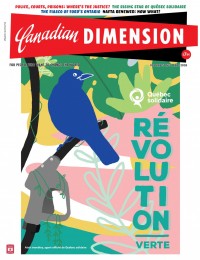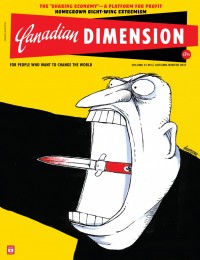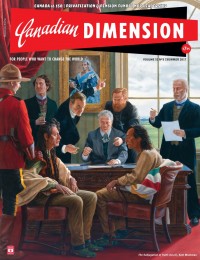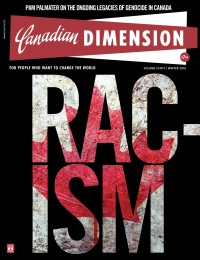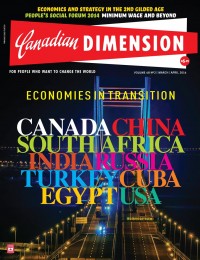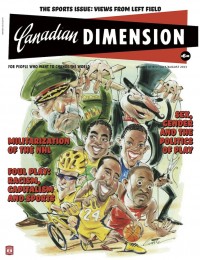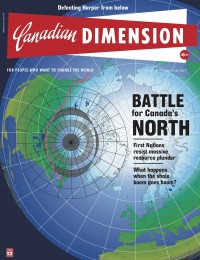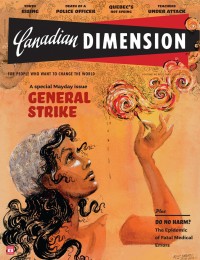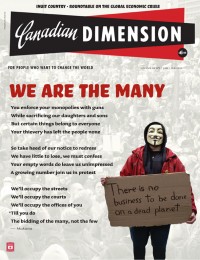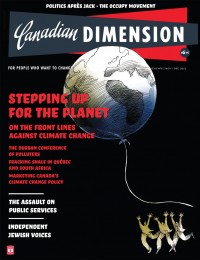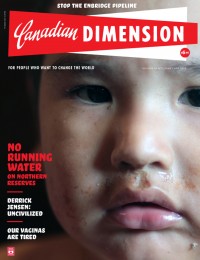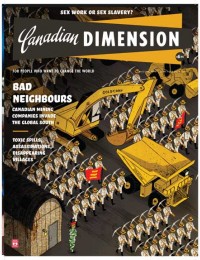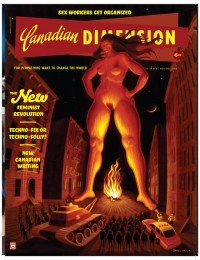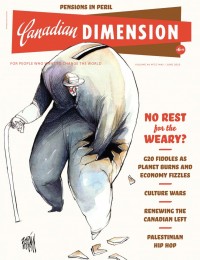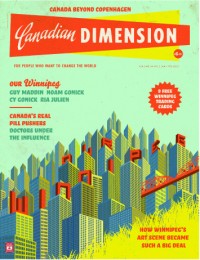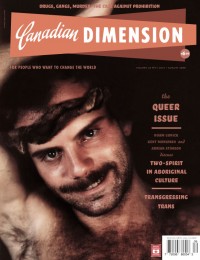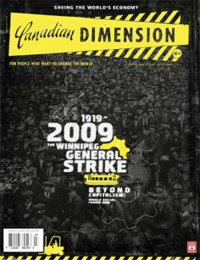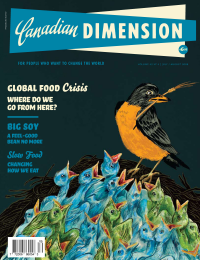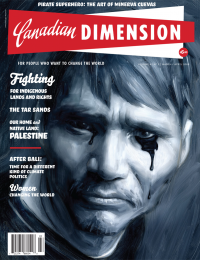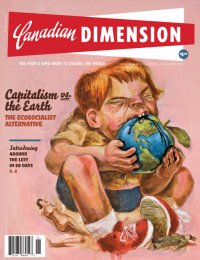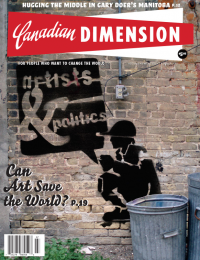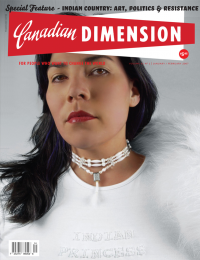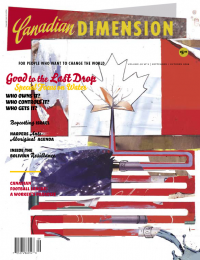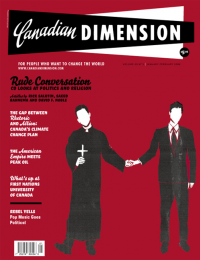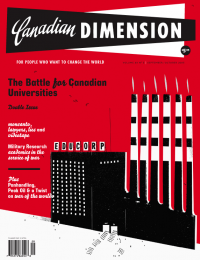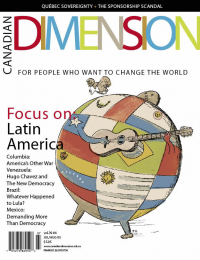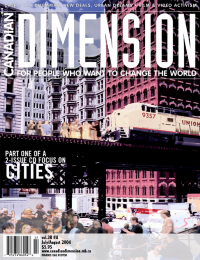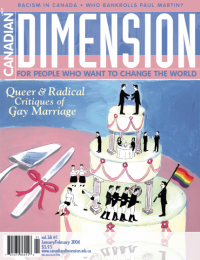CD and Feminism: Chronicle of a Movement Defining Itself
Over its 50 years, Canadian Dimension featured some of Canada’s most well-known and thought provoking feminists, activists and scholars, the majority of whom straddled the line between academia and activism. This was fitting for a magazine that has made such a dedicated effort to mobilize knowledge in ways that activists can use in their struggles. Historian Joan Sangster credited CD with being one of a handful of magazines emerging in the 1960s that provided a space for socialist feminists in the face of a labour movement only very slowly beginning to embrace basic principles of gender equality, and a feminist movement often dominated by the concerns of middle-class women. CD’s coverage of feminism was most vibrant when the movement itself was vital, engaged in concrete struggles and actively debating the best strategic ways forward. CD’s coverage and framing of feminist issues over the years provides a fascinating chronicle of the complexity of the wider feminist struggle in Canada as well as of the Canadian left’s engagement with that struggle. CD’s exploration of a series of debates within feminism — about work and class, race, racism and white privilege, reproductive rights, sexuality, sexual violence, and the issue of male allies — indicates a commitment to engage activists in thoughtful discussion, to challenge unspoken assumptions, and to work through sometimes uncomfortable disagreements.
Clearly influenced primarily by socialist feminist analysis, CD focused especially on the political economy of women’s oppression; the relationship between capitalism and patriarchy, socialism and feminism; and the struggles of women to transform workplaces, economic and social policy, and working- class and left organizations (whether unions or parties) in feminist directions.CD also covered the struggle for reproductive rights in a sustained way, asserting that women’s right to control their own bodies was “a basic demand of the women’s movement” (Gordon and Gavigan, March 1975) and “every bit as important a part of the socialism we want to build as, say, workers’ right to control the workplace” (editorial, “Reproductive Choice,” November 1983). Further, the magazine did not limit itself to class issues, and engaged early and extensively with other dimensions of women’s identities, including race, aboriginality, age, disability and sexuality.
Throughout, CD contributors and editors showed themselves remarkably sensitive to the different experiences of and inequalities between women, and to the need to resist middle-class solutions as addressing all women’s needs and interests.
Moreover, CD never asserted a clear editorial policy line on the “correct” approach to feminist issues. This openness allowed a full airing of the real intellectual, political and emotional challenges that needed to be worked through for feminist commitments to gender equality to take root and become “common sense” on the left. It also helped that strong and powerfully articulate feminist voices were always present, able to challenge the limits of defensive reactions to difficult issues. And CD also allowed for iconoclastic thinkers to puncture what superficial consensus may have developed, always requiring its readership to deepen and make more complex its understanding of gender politics.
CD’s engagement with feminism since the late 1960s reflected the struggles that characterized the impact of feminist ideas and practices in the academy, in progressive movements, and in personal lives and relationships. Because feminism sought to undo centuries-old patriarchal practices that implicated all our institutions and our own subjectivities, the process of that undoing inevitably involved conflict and controversy. The articles and debates that appeared in CD’s pages provide a chronicle of a movement defining itself, and often at odds with itself. Historically, the pivotal role played by many CD contributors in the feminist struggles taking place in the economic, political and cultural spheres renders their contributions of particular significance, and the magazine truly provides a living archive of a vibrant and dynamic era.













